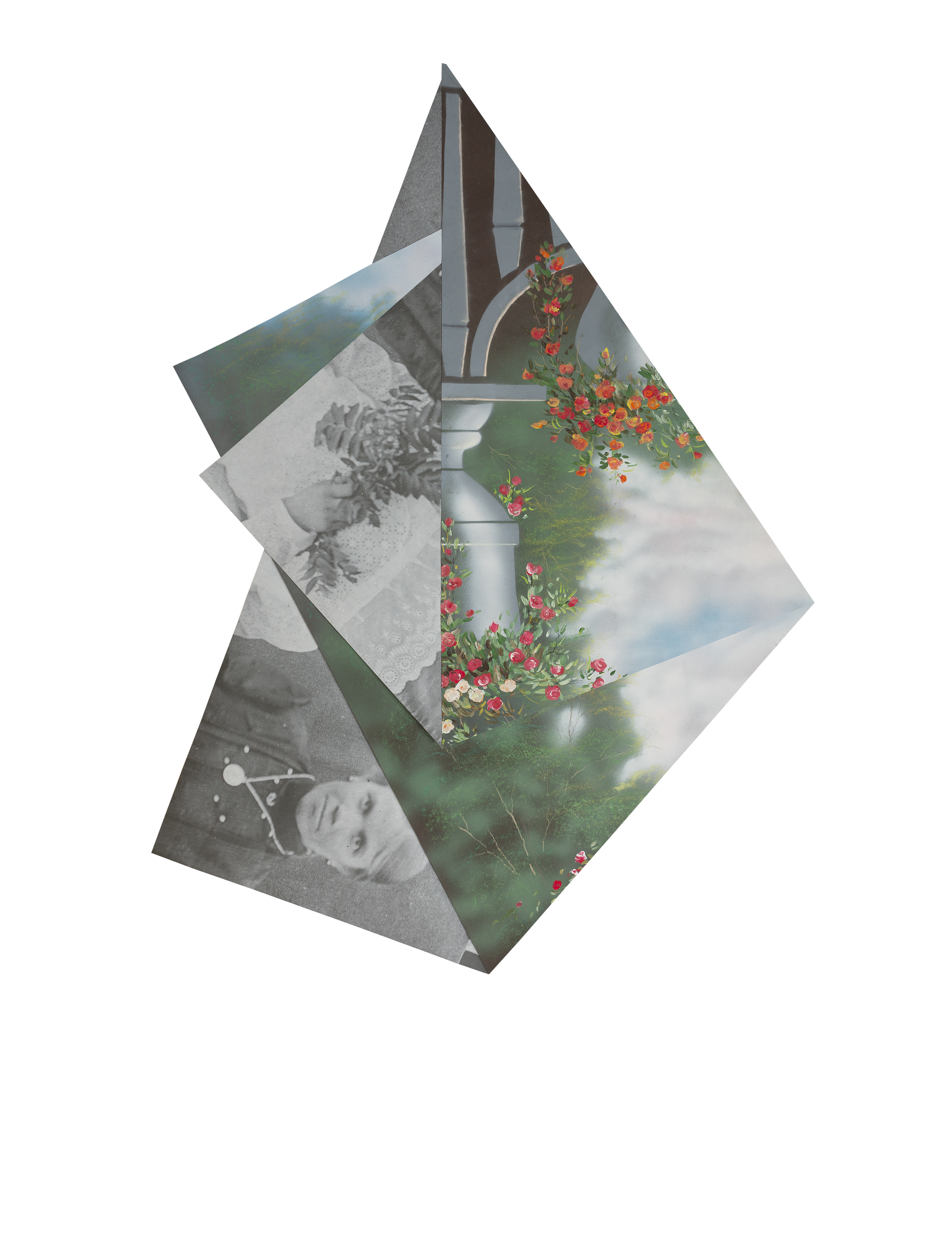
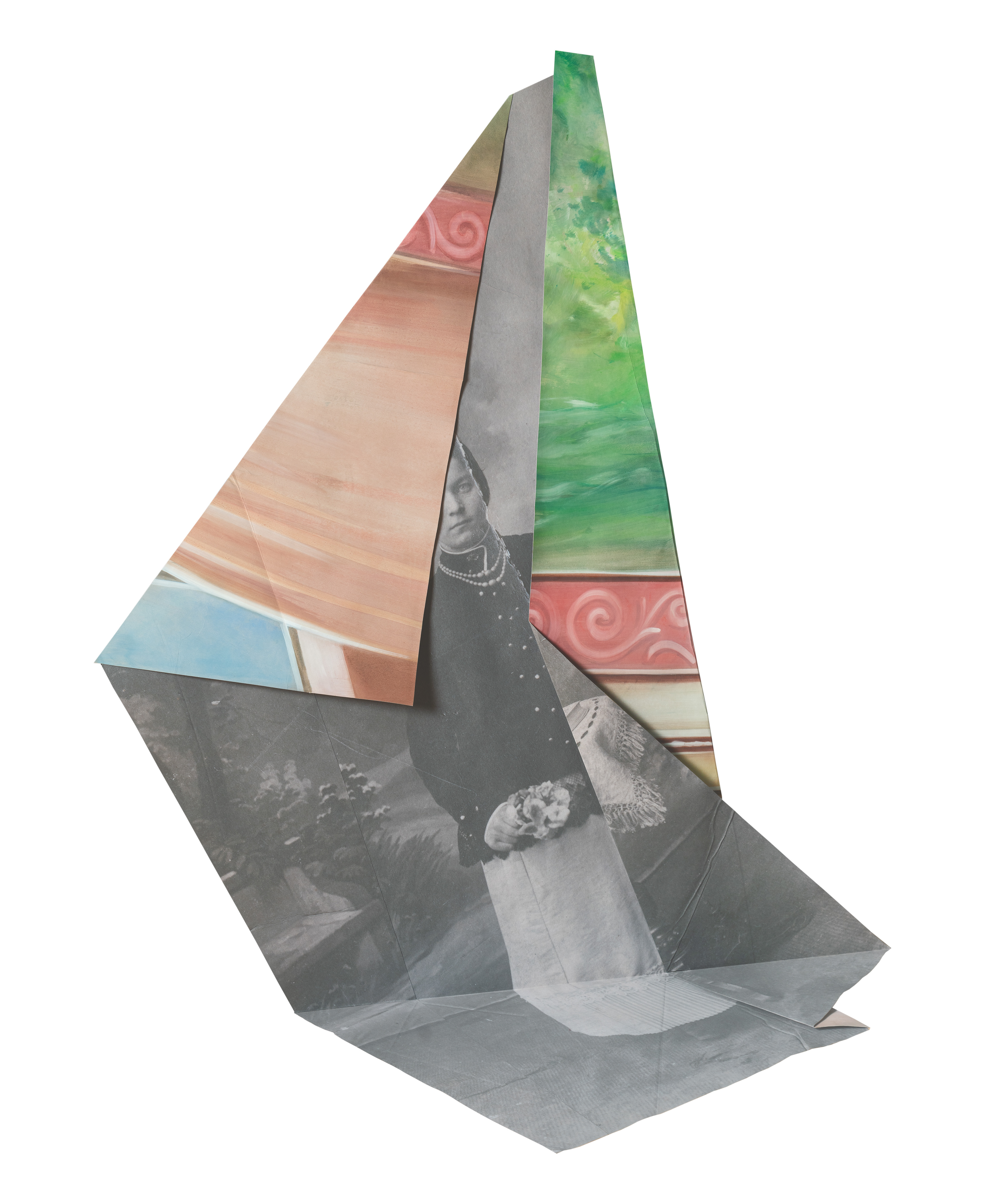
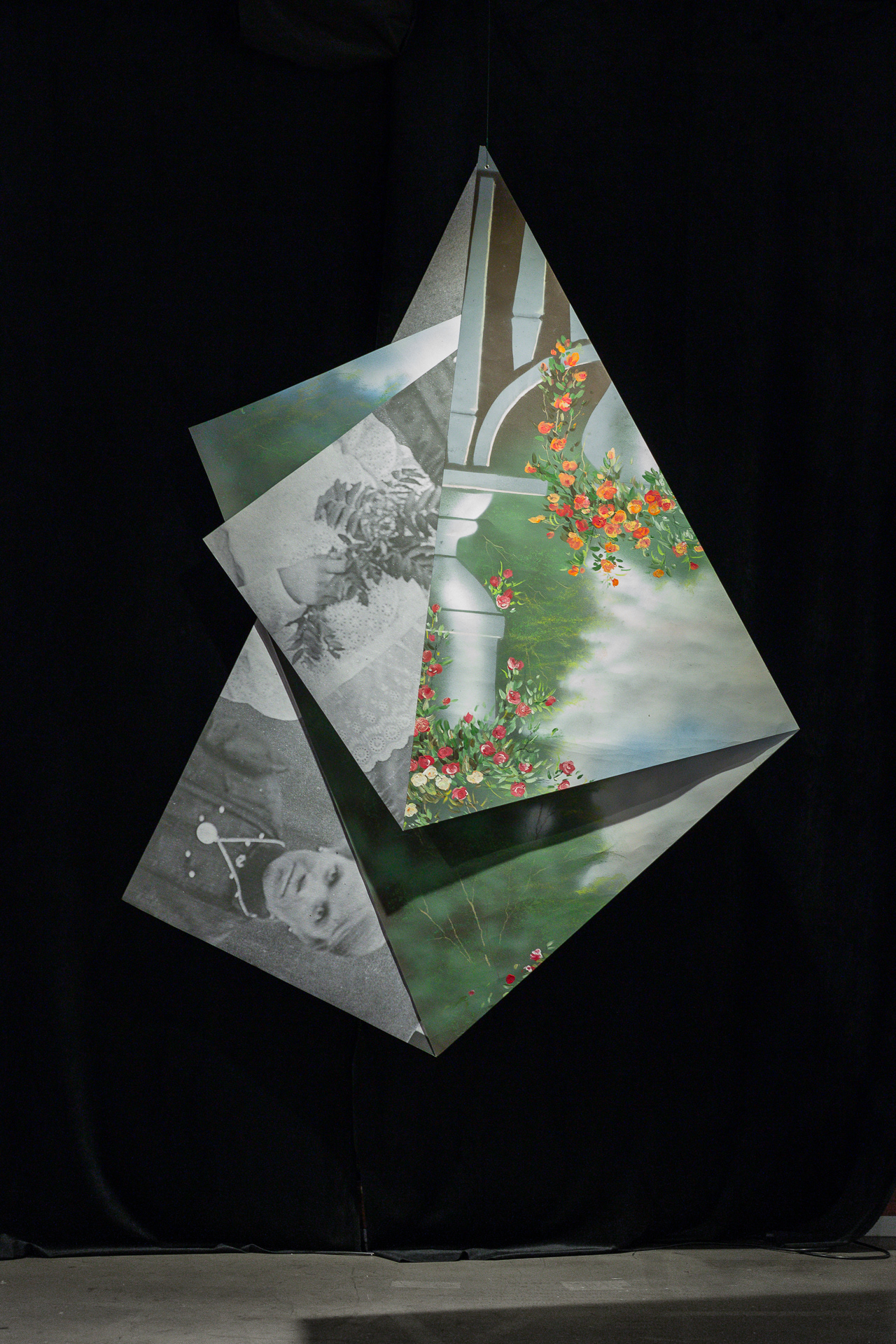
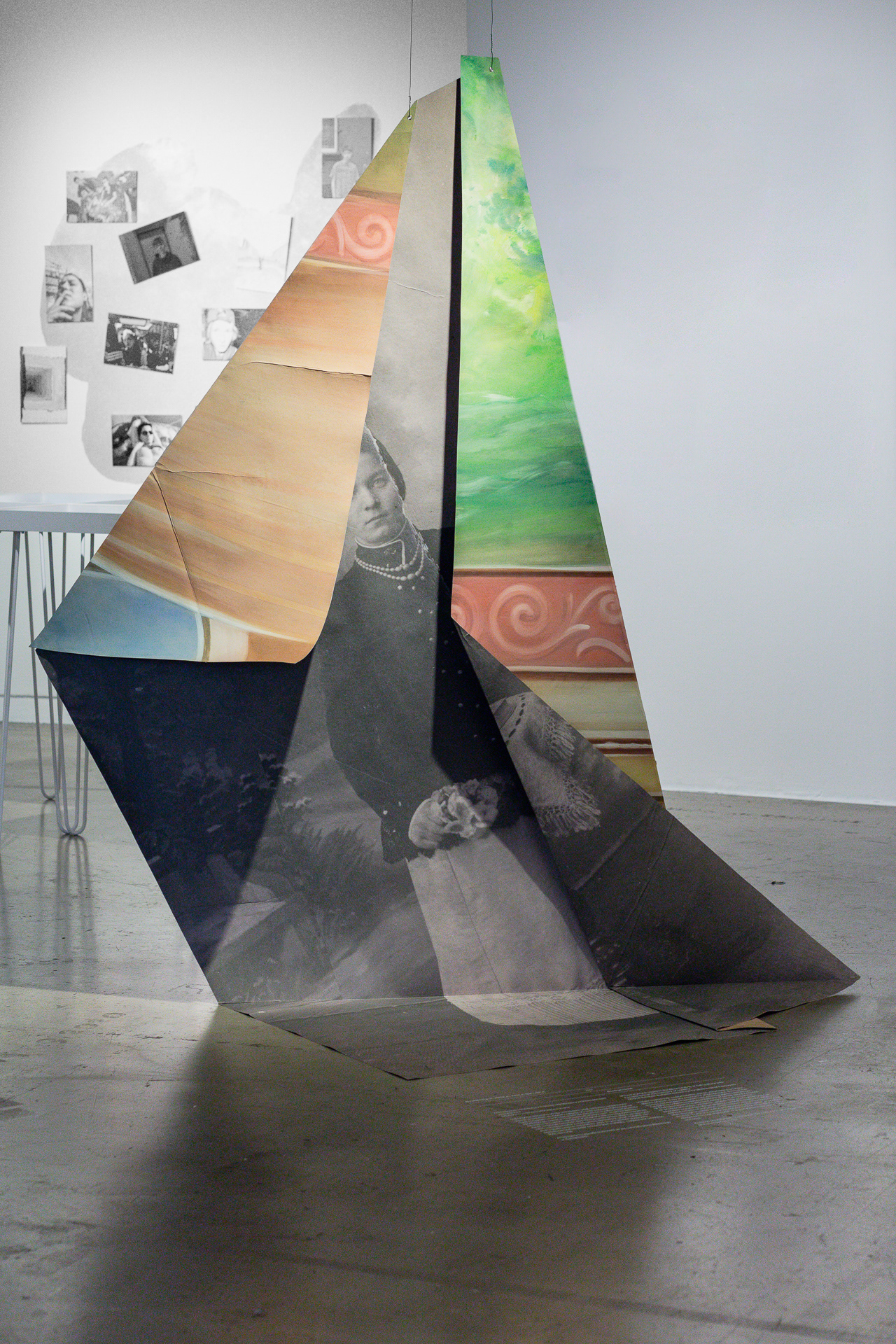
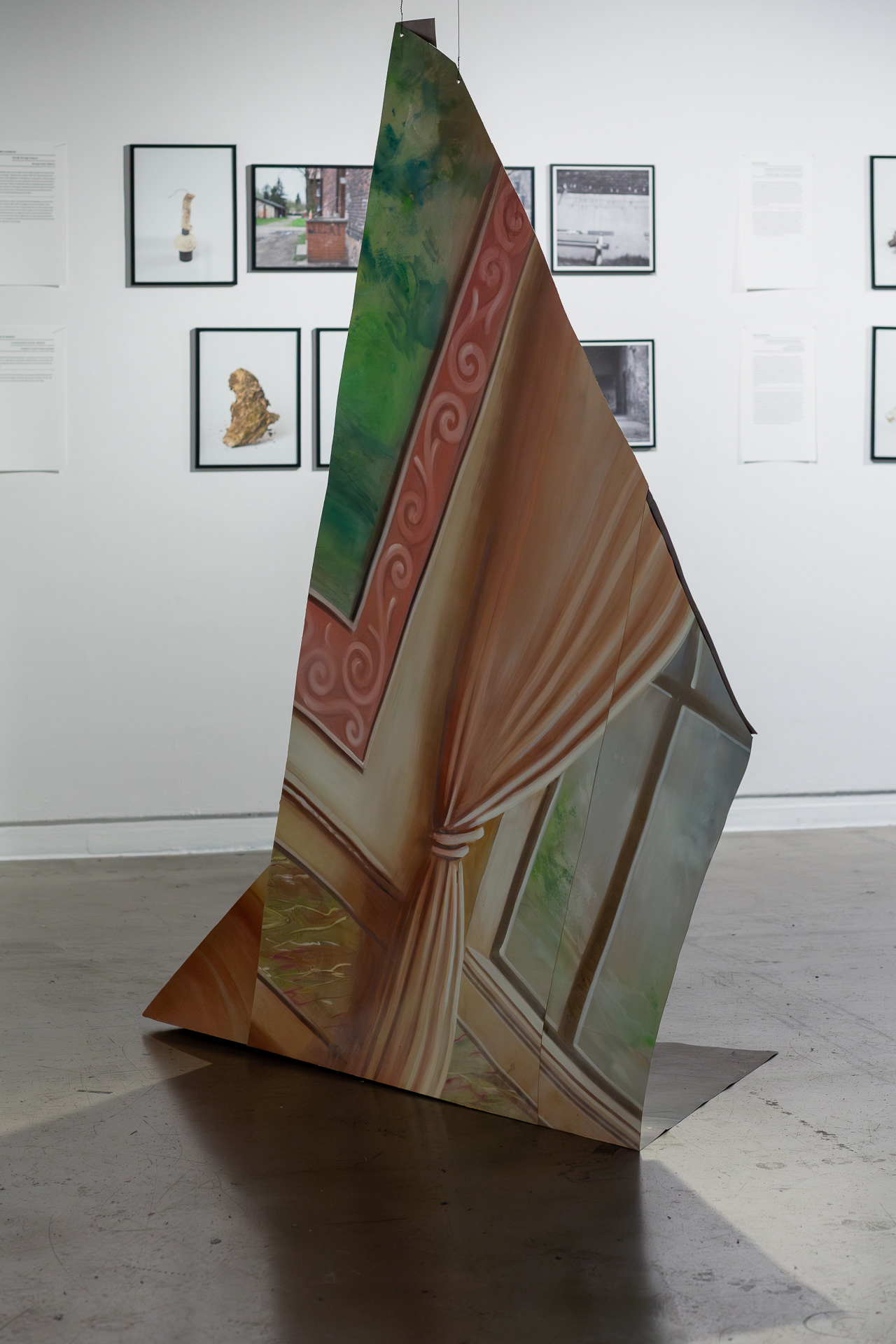
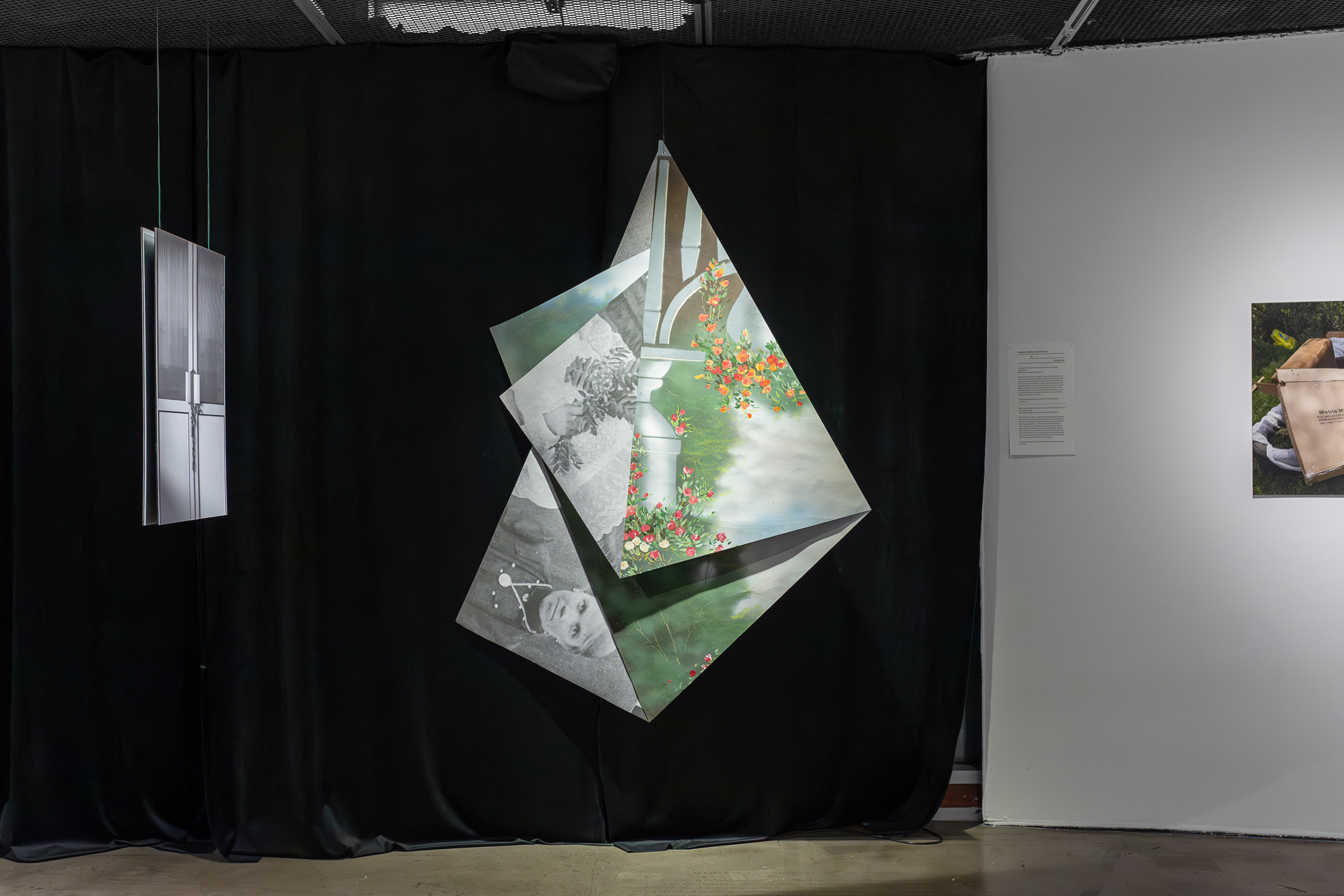
Barbara Kubska and Anka Sielska
”We are trying to replace the severed limb of folk culture with a prosthesis of the memory of nobility”.
Michał Rauszer “Bękarty pańszczyzny” [Bastards of Serfdom]
In their festive folk costume — jakla, apron, depending on their places of birth, they are posing for photographs. Behind the women, landscapes painted onto photographic backdrops, furnishing collective representations of social advancement, of finding oneself in a different, better space — in a palace, an aristocratic salon, a French garden. The photography is not intended to put their life on display, quite the opposite. Blue air without a trace of pollution, vivid colours, the atmosphere of an idyll, though in close up — the painting appears rather unsophisticated. There is a certain dissonance here. The identity is declared through the outfit, the place is conventional: anywhere but here.
Archival photograph courtesy of the collection of the Silesian Museum in Katowice.
TŁO
„Odciętą kończynę kultury ludowej zastępujemy protezą pamięci szlacheckiej”.
Michał Rauszer „Bękarty pańszczyzny”
Odświętnie ubrane w stroju chłopskim – jakli, fartuchu, właściwym dla ich urodzenia, pozują do zdjęcia. Za nimi pejzaże malowane na tłach fotograficznych reprezentują zbiorowe wyobrażenie awansu społecznego, bycia
w innej, lepszej przestrzeni – wnętrzu pałacu, salonie, francuskim ogrodzie. Fotografia nie ma reprezentować ich życia, wręcz przeciwnie. Błękitne powietrze bez śladu zanieczyszczeń, soczyste kolory, sielankowa atmosfera, choć z bliska – niezbyt wyrafinowane malarstwo. Jest w tym pewien dysonans. Deklaracja tożsamości zawarta jest w stroju, miejsce jest umowne. Byle nie tutaj.
Fotografie archiwalne pochodzą ze zbiorów Muzeum Śląskiego w Katowicach.
”We are trying to replace the severed limb of folk culture with a prosthesis of the memory of nobility”.
Michał Rauszer “Bękarty pańszczyzny” [Bastards of Serfdom]
In their festive folk costume — jakla, apron, depending on their places of birth, they are posing for photographs. Behind the women, landscapes painted onto photographic backdrops, furnishing collective representations of social advancement, of finding oneself in a different, better space — in a palace, an aristocratic salon, a French garden. The photography is not intended to put their life on display, quite the opposite. Blue air without a trace of pollution, vivid colours, the atmosphere of an idyll, though in close up — the painting appears rather unsophisticated. There is a certain dissonance here. The identity is declared through the outfit, the place is conventional: anywhere but here.
Archival photograph courtesy of the collection of the Silesian Museum in Katowice.
TŁO
„Odciętą kończynę kultury ludowej zastępujemy protezą pamięci szlacheckiej”.
Michał Rauszer „Bękarty pańszczyzny”
Odświętnie ubrane w stroju chłopskim – jakli, fartuchu, właściwym dla ich urodzenia, pozują do zdjęcia. Za nimi pejzaże malowane na tłach fotograficznych reprezentują zbiorowe wyobrażenie awansu społecznego, bycia
w innej, lepszej przestrzeni – wnętrzu pałacu, salonie, francuskim ogrodzie. Fotografia nie ma reprezentować ich życia, wręcz przeciwnie. Błękitne powietrze bez śladu zanieczyszczeń, soczyste kolory, sielankowa atmosfera, choć z bliska – niezbyt wyrafinowane malarstwo. Jest w tym pewien dysonans. Deklaracja tożsamości zawarta jest w stroju, miejsce jest umowne. Byle nie tutaj.
Fotografie archiwalne pochodzą ze zbiorów Muzeum Śląskiego w Katowicach.